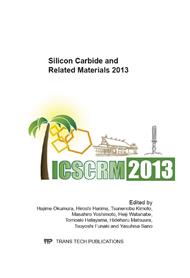p.1034
p.1038
p.1042
p.1046
p.1050
p.1054
p.1058
p.1063
p.1067
Optical and Electrical Simulations of Solar Cell Based on Silicon and Silicon Carbide
Abstract:
Among the different ways to improve the performances of light harvesting inside solar cells, multilayer configuration can be used. The bandgap of each single layer will contribute to absorption in a well defined wave-lengths range, enhancing the overall performances. Here, we investigate such performances in the case of solar cells made by two layers: a silicon one, and a SiC-based layer, and show the increasing of electrical working by means of computer simulations. These simulations are based on Finite Difference Time Domain (FDTD) for the optical calculations, on one side, and the Finite Element Method (FEM) for the electrical ones, on the other. The main goal is to show the enhancement of the electrical performances in heterostructure solar cells. In this paper, we investigate the influence of each different structure on the optical and electrical response. Our results show the influence of the device structures, in particular, the enhancement of the UV-ligth absorption inside the solar cell. Moreover, the difference structures allow us to show an improvement in the harvesting charge carrier by the heterojunction.
Info:
Periodical:
Pages:
1050-1053
Citation:
Online since:
February 2014
Authors:
Keywords:
Price:
Сopyright:
© 2014 Trans Tech Publications Ltd. All Rights Reserved
Share:
Citation:



